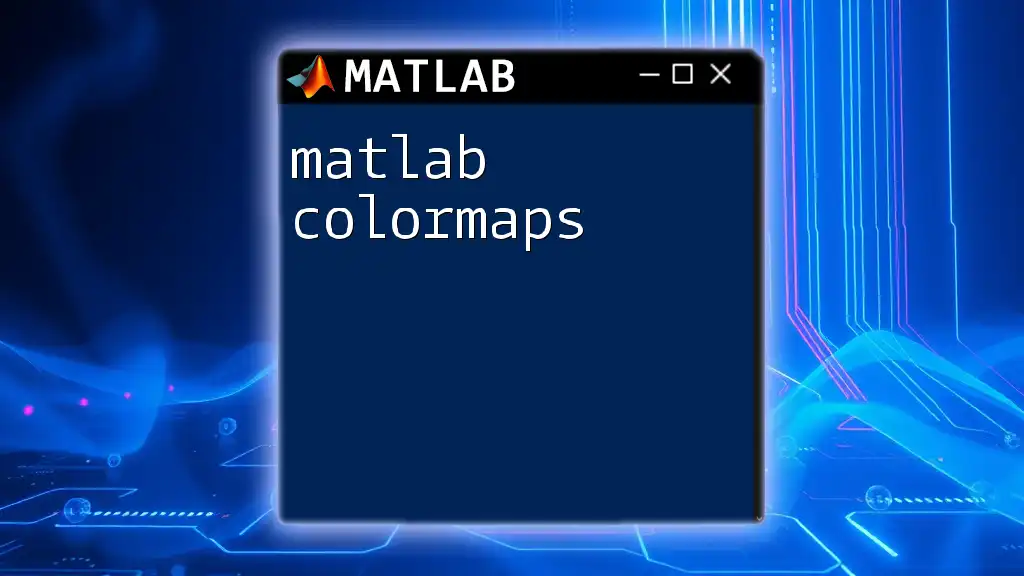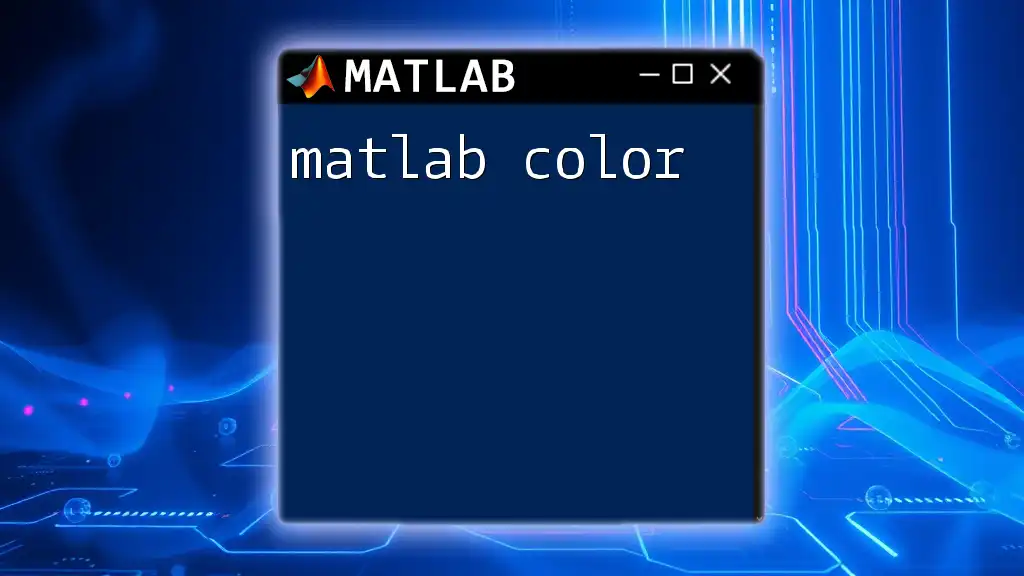"Matlab for OSX provides a robust platform for scientific computing, enabling users to efficiently execute mathematical operations and data analysis with ease."
Here’s an example of how to create a simple plot in Matlab:
x = 0:0.1:10; % Create a vector from 0 to 10 with increments of 0.1
y = sin(x); % Compute the sine of each element in x
plot(x, y); % Plot the results
xlabel('X-axis'); % Label for the x-axis
ylabel('Y-axis'); % Label for the y-axis
title('Sine Wave'); % Title of the plot
grid on; % Turn on the grid
Installing MATLAB on macOS
System Requirements
Before diving into MATLAB for OSX, it's crucial to ensure your system meets the necessary requirements. Make sure your Mac has the following:
- Hardware: A modern, multi-core processor and at least 8GB of RAM; 16GB is recommended for larger projects.
- Software: macOS version compatible with the MATLAB version you are planning to install (refer to MathWorks for specific version compatibility).
Downloading MATLAB
To get started with MATLAB on OSX, follow these straightforward steps to download the software from the MathWorks website:
- Visit the MathWorks website and log in or create an account.
- Navigate to the Downloads section, ensuring you select the correct version of MATLAB for your OS.
- Choose your license type, whether it's a student, individual, or academic version.
Installation Process
Step-by-Step Installation Guide
-
Opening the Installer: Once downloaded, locate the installer in your Downloads folder. Double-click to open it.
-
Choosing Installation Type: You can select between the Custom and Typical installation. For most users, Typical installation is recommended as it includes standard toolboxes.
-
Activation Process: At the end of the installation, you will be prompted to activate your MATLAB. You can use your activation key provided by MathWorks for this step.
-
Launching MATLAB: Use the following command in Terminal to quickly open MATLAB:
sudo /Applications/MATLAB_R2023a.app/bin/matlab

Getting Started with MATLAB on macOS
User Interface Overview
Navigating the MATLAB interface is vital for effective usage. MATLAB's main components include:
- Command Window: Where you can run your commands directly.
- Workspace: This area shows all the variables currently in memory.
- Editor: Useful for writing scripts and functions.
Familiarizing yourself with these sections can significantly enhance your efficiency in MATLAB.
Basic MATLAB Commands
Once you have the interface up and running, it’s time to get acquainted with some fundamental commands that form the backbone of MATLAB usage:
- `clc`: Clears the command window.
- `clear`: Removes all variables from the workspace, giving you a clean slate.
- `close all`: Closes all open figure windows.
Here’s how you would typically use these commands:
clc; % Clear command window
clear; % Remove variables
close all; % Close all figures

Working with MATLAB on macOS
Creating Scripts and Functions
One of the primary ways to leverage the power of MATLAB is through scripting. Here’s how you can create a script:
- Open the Editor.
- Write your code.
- Save your file with a `.m` extension.
When creating functions, the structure is slightly different but equally simple. Here is an example function that squares a number:
function output = myFunction(x)
output = x^2;
end
Define your function at the top of your script and pass the variable `x` to get the result.
Working with Variables and Data Types
Understanding Variables
In MATLAB, variables are dynamically typed, meaning you can assign and change their types easily throughout your code. To create a variable, simply assign a value:
myVar = 10; % Numeric variable
Common Data Types in MATLAB
Familiarizing yourself with MATLAB's data types is essential. Here are a few key types:
-
Matrices: The core of MATLAB. Create a matrix like this:
myArray = [1, 2, 3; 4, 5, 6]; -
Cell Arrays: Useful for heterogeneous data types.
myCell = {'Hello', 42; true, 3.14};
These data structures are essential for efficient data manipulation and storage.
Visualization in MATLAB
Creating Basic Plots
MATLAB excels in data visualization. To create a simple plot, you can use the `plot` function. Here’s an example that visualizes a sine wave:
x = 0:0.1:10; % Defining x from 0 to 10 with a step of 0.1
y = sin(x); % Calculating sine values
plot(x, y); % Creating the plot
title('Sine Wave'); % Adding the title
xlabel('X-axis'); % Labeling X-axis
ylabel('Y-axis'); % Labeling Y-axis
Customizing Plots
You can enhance your visualizations by adding legends, titles, and axis labels. This makes your plots informative and easier for others to interpret. Using commands like `legend()` can help in this regard.

Troubleshooting Common Issues on macOS
Installation Problems
If you encounter installation errors, consider the following tips:
- Check your internet connection. The installer requires a stable connection to verify your license.
- Ensure sufficient disk space. Inadequate space can halt installation.
- Consult MathWorks support for common error messages.
Running MATLAB Scripts
When trying to execute a script, if you encounter errors, check for:
- Syntax errors: Ensure your code is correctly written.
- Variable scope: Make sure all variables are available in the workspace during execution.

MATLAB Shortcuts and Productivity Tips for macOS Users
Keyboard Shortcuts
Maximizing your workflow can be achieved through keyboard shortcuts. Here are a few essential ones:
- Command + R: Run the current script.
- Command + I: Open the current file for editing.
Familiarizing yourself with these shortcuts can save time and help you navigate MATLAB more efficiently.
Customizing the Environment
MATLAB allows you to customize your working environment to suit your preferences. From changing the colors of the interface to customizing the layout of windows, personalized settings can significantly enhance your coding experience.

Conclusion
Mastering MATLAB on macOS is a valuable skill in various scientific and engineering domains. By consistently practicing the commands, scripting functions, and utilizing visualization tools, you can significantly enhance your data analysis capabilities.

Additional Resources
Recommended Books and Online Courses
For those looking to deepen their understanding of MATLAB, consider exploring recommended books and online courses that provide more structure and insights.
Community and Support Forums
Joining forums dedicated to MATLAB can also be beneficial. Engaging with the community allows you to ask questions, share experiences, and learn from others in your field.

Call to Action
Are you ready to take your MATLAB skills to the next level? Feel free to share your experiences or any difficulties you've encountered while using MATLAB for OSX in the comments below!

















